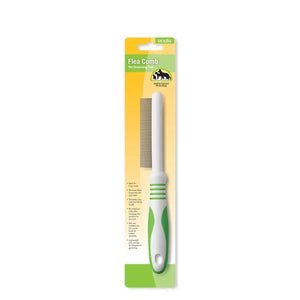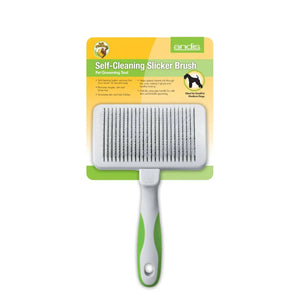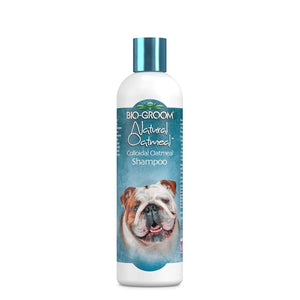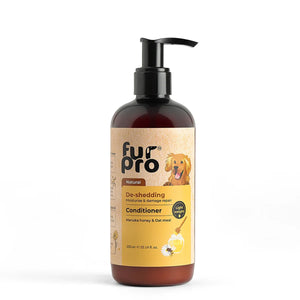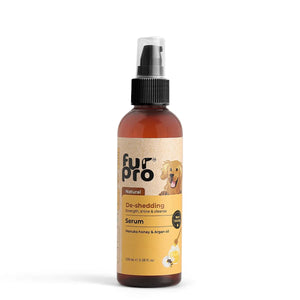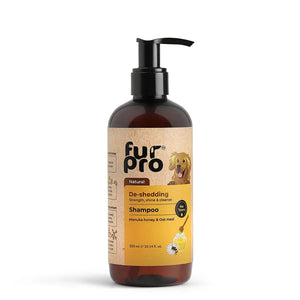If you're a dog lover but dread the thought of pet hair all over your house (or your clothes!), you're not alone. Many people search for dog breeds that don’t shed to enjoy the companionship of a canine without the constant cleaning. Whether you suffer from allergies or simply prefer a tidier home, non shedding dog breeds might be the perfect fit for you.
While no dog is 100% hypoallergenic, there are several breeds of dogs that don’t shed or shed very minimally. These dogs produce less dander and hair, making them popular choices for people who want a cleaner and more manageable pet experience.
Let’s explore some of the most beloved dogs that don't shed much and what makes each breed special.
Understanding Non-Shedding Dogs
Before diving into the list of dogs that don’t shed, it’s important to understand what “non-shedding” really means and why certain breeds are better suited for allergy-prone homes.
What Does “Non-Shedding” Mean?
You’ve probably heard the term thrown around a lot, but here’s the truth: non-shedding dog breeds don’t mean zero hair loss. All dogs shed to some extent—yes, even the so-called “non-shedders.”
Non-shedding typically refers to breeds that:
-
Lose very little hair
-
Have hair that falls out less frequently
-
Don’t leave visible fur around the house
Difference Between Non-Shedding and Low-Shedding
-
Non-shedding breeds tend to have hair (like humans) rather than fur. Their hair grows longer and falls out less frequently.
-
Low-shedding breeds do shed, but the volume of loose fur is minimal and usually less noticeable.
How Hair Growth Cycles Affect Shedding
Dogs go through hair growth cycles (anagen, catagen, telogen, and exogen), just like humans. Dogs that don’t shed much tend to have longer anagen (growth) phases, meaning their hair grows longer before falling out.
Clarifying Myths: No Dog is Truly 100% Shed-Free
Let’s bust a myth: there is no such thing as a completely shed-free dog. Even breeds labeled “hypoallergenic” will lose some hair and dander. However, the amount is significantly less compared to heavy shedders like Labradors or Huskies.
Why Choose a Low or Non-Shedding Dog Breed?
If you’re on the fence about adopting a low-shedding or non-shedding dog breed, here are some compelling reasons to go for it.
Benefits for Allergy Sufferers
Many allergy sufferers react to pet dander rather than fur itself. Breeds of dogs that don’t shed often produce less dander and saliva proteins, making them more tolerable for sensitive individuals.
Easier Home Maintenance
Let’s face it: no one enjoys finding fur on their clothes, couches, or car seats. Dogs that don’t shed help keep your home cleaner and your vacuum happier.
Grooming vs. Cleaning Trade-Off
While non shedding dog breeds require regular grooming to maintain their coat and avoid mats, the trade-off is less cleaning around the house. You’ll spend more time brushing than sweeping—totally worth it for a fur-free space!
Popular Non-Shedding Dog Breeds
Looking for a furry friend that won’t leave a trail of hair behind? Here are some of the most popular and charming non shedding dog breeds:
Poodle (Standard, Miniature, Toy)
Poodles are one of the most intelligent and versatile dog breeds that don’t shed. Available in three sizes—Standard, Miniature, and Toy—Poodles have tight, curly coats that trap hair instead of letting it fall. Regular grooming keeps them looking fabulous and helps reduce allergens.
Why they’re great:
-
Highly trainable
-
Energetic and playful
-
Perfect for families and individuals alike
Bichon Frise
The Bichon Frise is a cheerful, fluffy companion with a white, curly coat that rarely sheds. Their soft, hypoallergenic fur makes them ideal for people with sensitivities. Despite their fancy appearance, they’re surprisingly low-maintenance with regular grooming.
Why they’re great:
-
Happy and friendly personality
-
Excellent with kids
-
Low-shedding and allergy-friendly
Shih Tzu
With their royal lineage and flowing locks, Shih Tzus are small yet full of personality. Their long, luxurious hair is more like human hair and tends to stay put rather than shed. Regular brushing is a must, but you’ll love the glamour they bring to your life.
Why they’re great:
-
Affectionate lap dogs
-
Adapt well to apartment living
-
Great for families and seniors
Maltese
Tiny but mighty, the Maltese is another non shedding dog breed that steals hearts with its silky white coat. Though they need grooming to keep their coat tangle-free, they don’t leave behind fur all over your home.
Why they’re great:
-
Compact and easy to travel with
-
Sweet and gentle demeanor
-
Great option for allergy sufferers
Portuguese Water Dog
Energetic and loyal, the Portuguese Water Dog has a dense, curly coat that’s both waterproof and low-shedding. Originally bred for water work, they love an active lifestyle and make amazing family companions.
Why they’re great:
-
Loves swimming and outdoor play
-
Smart and eager to learn
-
Minimal shedding with regular grooming
Schnauzer (Miniature, Standard, Giant)
Schnauzers come in three sizes and all of them are considered dogs that don’t shed heavily. Their wiry coat requires grooming, but it doesn't leave much hair behind. Plus, they’re known for their alertness and strong personality.
Why they’re great:
-
Great watchdogs
-
Loyal and protective
-
Very little shedding with routine trims
Basenji
The Basenji is often called the “barkless dog” for its unique yodel-like vocalization. But another standout feature is their ultra-clean, short coat that rarely sheds. They even groom themselves like cats!
Why they’re great:
-
Low odor and minimal shedding
-
Very independent and clean
-
Great for active individuals
Yorkshire Terrier
Small, spunky, and stylish, the Yorkshire Terrier is a popular pick among breeds of dogs that don’t shed. Their long, silky hair is more like human hair, and regular grooming can keep shedding to a minimum.
Why they’re great:
-
Big personality in a small body
-
Ideal for apartments
-
Doesn’t shed like traditional fur-coated breeds
Lhasa Apso
Originally bred as sentinel dogs in Tibetan monasteries, Lhasa Apsos are dignified yet playful. Their long, straight coat doesn’t shed much, making them a smart pick for neat freaks.
Why they’re great:
-
Alert and independent
-
Long lifespan
-
Minimal shedding with regular brushing
Soft Coated Wheaten Terrier
As the name suggests, these terriers have a soft, silky coat that doesn’t shed like other breeds. Their friendly nature and moderate grooming needs make them a favorite among allergy-conscious families.
Why they’re great:
-
Playful and affectionate
-
Unique soft coat
-
Low-shedding with regular care
Things to Know Before Choosing a Non-Shedding Dog
Bringing home a non shedding dog breed is a great choice for many, but it’s important to understand what comes with the (low-fur) package.
Grooming Requirements
While these dogs may not leave fur everywhere, many require regular brushing or professional grooming to keep their coats healthy and mat-free. Skipping grooming can lead to tangles, discomfort, and even skin issues—especially for long-haired breeds like Shih Tzus or Maltese.
Allergy Considerations
Low-shedding doesn’t always mean allergy-proof. Dander, saliva, and skin proteins are the real allergy triggers. If you’re sensitive, choose wisely and take steps like regular cleaning, using air purifiers, and keeping pets off the bed to reduce allergens at home.
Energy Levels and Temperament
Not all dogs that don’t shed are couch potatoes! Breeds like Poodles and Portuguese Water Dogs are active and smart—meaning they’ll need both physical and mental stimulation. Make sure the dog’s energy and temperament match your lifestyle and training abilities.
Care Tips for Non-Shedding Breeds
These non shedding dog breeds might shed less, but they still need consistent care to keep their skin, coat, and health in top shape.
Bathing and Brushing
Frequency depends on the coat type—curly coats may need brushing several times a week, while silkier ones require gentle detangling. Use mild shampoos designed for sensitive skin, and always detangle before bathing to avoid matting.
Nutrition for a Healthy Coat
What your dog eats directly affects their coat. High-quality food rich in omega-3 fatty acids, vitamins, and proper hydration supports shiny, soft fur. Supplements can help, especially for breeds prone to dry skin or dull coats.
Regular Vet Visits and Skin Health
Non-shedding coats can hide skin problems, so routine vet check-ups are a must. Stay on top of parasite prevention, and pay attention to ears, eyes, and paws—especially in long-coated breeds where buildup can lead to infections.
FAQs
Are non-shedding dogs completely hypoallergenic?
Not entirely. While non shedding dog breeds shed less hair and dander, no dog is 100% hypoallergenic. Allergies are usually triggered by proteins in a dog’s saliva, skin, or urine—not just their fur. However, low-shedding breeds often cause fewer allergic reactions and are easier to manage for sensitive individuals.
What is the easiest non-shedding dog to care for?
The Miniature Schnauzer is often considered one of the easiest dogs that don’t shed to care for. They have a manageable coat, are highly trainable, and adapt well to different living environments. Their grooming needs are regular but not overly demanding compared to long-haired breeds.
Do non-shedding dogs still need grooming?
Yes—often more! Breeds of dogs that don’t shed usually require consistent grooming to prevent mats and tangles. Their coats don’t naturally fall out, so without regular brushing and trimming, hair can become dense and uncomfortable for the dog.
Are there any large dog breeds that don’t shed?
Yes! The Standard Poodle and Portuguese Water Dog are excellent examples of large dog breeds that don’t shed much. They’re active, intelligent, and make great family pets—but they do need consistent grooming and exercise.
Can non-shedding dogs still cause allergies?
Yes, they can. Even if a dog doesn’t shed much, they still produce dander and saliva—common allergy triggers. Regular cleaning, air purifiers, and bathing can help minimize allergens in the home, but sensitive individuals should always spend time with a breed first before adopting.




